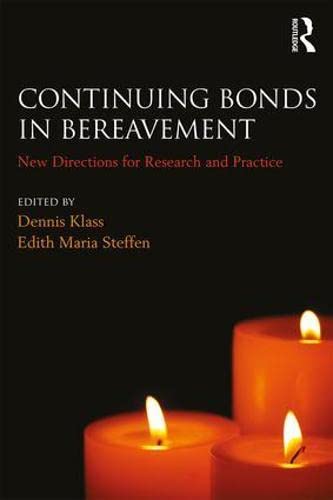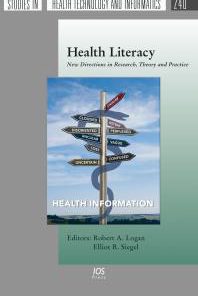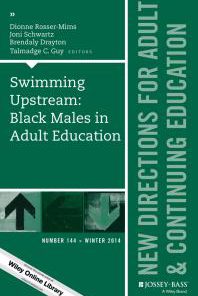Continuing Bonds in Bereavement New Directions for Research and Practice 1st Edition by Dennis Klass, Edith Maria Steffen 0415356199 9780415356190
$50.00 Original price was: $50.00.$25.00Current price is: $25.00.
Continuing Bonds in Bereavement New Directions for Research and Practice 1st Edition by Dennis Klass, Edith Maria Steffen – Ebook PDF Instant Download/Delivery: 0415356199, 9780415356190
Full download Continuing Bonds in Bereavement New Directions for Research and Practice 1st Edition after payment

Product details:
ISBN 10: 0415356199
ISBN 13: 9780415356190
Author: Dennis Klass, Edith Maria Steffen
The introduction of the continuing bonds model of grief near the end of the 20th century revolutionized the way researchers and practitioners understand bereavement. Continuing Bonds in Bereavement is the most comprehensive, state-of-the-art collection of developments in this field since the inception of the model. As a multi-perspectival, nuanced, and forward-looking anthology, it combines innovations in clinical practice with theoretical and empirical advancements. The text traces grief in different cultural settings, asking questions about the truth in our interactions with the dead and showing how new cultural developments like social media change the ways we relate to those who have died. Together, the book’s four sections encourage practitioners and scholars in both bereavement studies and in other fields to broaden their understanding of the concept of continuing bonds.
Continuing Bonds in Bereavement New Directions for Research and Practice 1st Table of contents:
1 Introduction: Continuing Bonds—20 Years On
The Origins of the Continuing Bonds Model of Grief
Continuing Bonds in Bereavement Studies and Interventions
Four Themes in the Book
Theme 1: Continuing Bonds Are Intersubjective
Theme 2: Continuing Bonds Are an Important Aspect of Finding or Constructing Meaning
Theme 3: The Continuing Bonds Model Raises Questions about the Sense in which Continuing Bonds with the Dead Are Real and/or in What Sense They Are True
Theme 4: Continuing Bonds Are Best Understood within their Cultural Setting and Are Very Useful as We Develop a Model of Grief that Can Be Applied to All Cultures
The Structure of the Book
References
Section I Overview of the Continuing Bonds Model
Introduction
2 The Two-Track Model of Bereavement and Continuing Bonds
Case Study: A Family’s Loss to Suicide – The Initial Contact
The Model and Its Background
Case Consultations and Three-Year Follow-Up of Loss
Concluding Remarks: Continuing Bonds and Life-Long Connections
References
3 Posttraumatic Growth and Continuing Bonds
PTG and Bereavement
PTG, Dialectical Thinking, Wisdom, and Continuing Bonds
Domains of Growth Following Bereavement
Spirituality, Continuing Bonds, and PTG
Continuing Bonds and Facilitating PTG
Using the Continuing Bond in a Mission to Serve
Conclusion
References
4 How Continuing Bonds Have Been Framed Across Millennia
Six Frames
Care or Memory?
Discussion
Conclusion
References
5 Continuing Bonds, Authorship, and American Cultural History
Note
References
Section II Continuing Bonds and Clinical Contexts
Introduction
Subsection II.1 Innovations for Working with Continuing Bonds
6 Reconstructing the Continuing Bond: A Case Study in Grief Therapy
Loss and the Reconstruction of Meaning
The Present Case
The Loss of Balance
The Center of the Universe
Introducing the Loved One
A Quest for Connection
Inviting Mom’s Presence
A Frozen Grief
The Loss of Safety in the Family
A Silent Story
Analogical Listening
An Internal Dialogue
Externalizing the Felt Sense
Standing up to the Feeling
Consulting with Mom
Renegotiating Attachment
Holding the Feeling
Re-engaging with Mom
Closing Reflections
Future Steps
Therapeutic Postscript
Conclusion
Author’s Note
References
7 Remembering Relations Across the Years and the Miles
A New Practice
Introductions
Highlighting the Meaning of the Bond
Listening to the Voice of the Deceased
Re-membering the Future
Siobhan’s Comments
References
8 Working with Continuing Bonds from an Attachment Theoretical Perspective
Continuing Bonds: For Better or For Worse?
Attachment as a Factor for CB
Research on CB: For Better or for Worse
Insecure Attachment as a Factor in CB: Anxious Attachment
Insecure Attachment as a Factor in CB: Avoidant Attachment
Disorganized Attachment and CB: The Impact of Early Abuse and Neglect
Attachment Security and CB: Treatment Implications and Recommendations
Anxious Attachment and CB: Acknowledging the Reality of the Loss
Rachel: They Promised Me They Would Never Leave
Emotion Regulation in the Insecurely Attached: A Foundation for Reconfiguration of the CB
Positive Functions of CB in the Anxiously Attached
Lisa: Bound by Fear and Loyalty
The Turning Point for Lisa: A Continuing Role for Al
Avoidant Attachment and CB: Adaptation vs. Suppression
Suppressed Feelings
Hannah
Disorganized Attachment and CB
Restoring Mentalizing
Audrey
Closing Thoughts on an Attachment-Informed Approach to Working with CB
CB as a Metaphor
Acknowledgments
References
9 Externalized and Internalized Continuing Bonds in Understanding Grief
Introduction
Acknowledgment
Note
References
10 Forgiveness and Continuing Bonds
Forgiveness and Continuing Bonds
What Is Forgiveness and Why Might It Be Linked to CB?
Research Directly Exploring the Forgiveness–CB Connection
How Can We Use This Information?
Conclusion
References
11 Reaching the Unspoken Grief: Continuing Parental Bonds During Pregnancy Loss
Introduction
The Impact of Pregnancy Loss
Pregnancy Loss as an Ambiguous Loss
Continuing Bonds in Parental Grief
Establishing Continuing Bonds in Pregnancy Loss
Sensational Experience
Actions and Rituals
Value and Life Lessons Learned
Conclusion
References
Subsection II.2 Specific Perspectives for Working with Sense of Presence
12 Working with Welcome and Unwelcome Presence in Grief
The Challenge of Working with Welcome Presence
Affirming the Client’s Perspective
Companions on the Journey
Encountering Unwelcome Presence
Therapeutic Principles for Working with Presence
Notes
References
13 The Potential Therapeutic Efficacy of Assisted After-Death Communication
Grief and Treatment Options
Psychic Mediums
The Intersection of Grief, Continuing Bonds, Assisted ADCs, and Clinical Practice
Exploratory Study
Representative Participant Comments
Conclusions
Future Directions
References
Section III The Truth Status and Reality Status of Continuing Bonds
Introduction
14 Ontological Flooding and Continuing Bonds
Reductionist Approaches
Social Facts and Functions
Phenomenological Bracketing
Ontological Flooding
Conclusions
References
15 Considering Anomalous Events During Bereavement as Evidence for Survival
Chapter Overview
Introduction
Cases of Potential Evidence for Survival
Thoughts on the Reality of Survival
Conclusion
References
16 Grief, Ritual and Experiential Knowledge: A Philosophical Perspective
Introduction
Rituals and Continuing Bonds: Two Case Studies
Kurova Guva, Samhain and Continuing Bonds
Ritual
Practical Implications
Conclusion
Acknowledgements
Note
References
Section IV Continuing Bonds in Cultural Contexts
Introduction
Subsection IV.1 Continuing Bonds’ Complex Roles in Cultures
17 Identity and Continuing Bonds in Cross-Cultural Perspective: Britain and Japan
Introduction
Continuing Bonds in Britain
Continuing Bonds in Japan
Conclusion
Notes
References
18 Evolving Roles in Research Exploring Communication About Grief: Meaning Making and Continuing Bonds
Eulogies: Expressions of Honor and Support at Funerals and Memorial Services
Elegies: Poetry About the Dead
Self-Help Books and Grief Accounts: Survivor Literature
Experimental Disclosure Texts About Grief: Insight Into Types of Meaning Making
Realignment of Roles and Relationships in Discourses of Grief
Conclusion: Applications and Directions
References
19 Ancient Mesopotamian Remembrance and the Family Dead
Introduction
Traditional View of Kispum
Textual Sources
Ghosts and the Family Dead
Remembrance and Cultural Memory
Material Evidence
Conclusions
References
20 Continuing Bonds as a Double-Edged Sword in Bereavement?
Introduction
Continuing Bonds with the Deceased in the Chinese Context
Continuing Bonds in Relation to Bereavement Outcomes
Recent Qualitative Studies on Continuing Bonds in a Chinese Context
Forms of Continuing Bonds: Internalized and Externalized Only?
Exploratory Qualitative Study on Continuing Bond of Chinese Bereaved Persons
The Coexisting Comfort and Distress in Continuing Bond Experience
Continuing Bond as a Protective or Risk Factor to Bereavement Outcomes
Conclusion
References
21 Continuing Bonds with Native Culture: Immigrants’ Response to Loss
The Continuing Bonds Model of Mourning as Applied to Immigration
Integrating the Continuing Bonds Model with the Assimilation Model
Case Studies of Immigrants’ Continuing Bonds with Their Native Culture
Clinical Recommendations
Note
References
Subsection IV.2 A New Cultural Context: Social Media
22 Continuing Bonds and Social Media in the Lives of Bereaved College Students
Introduction
Psychosocial Development and Attachment in the Lives of College Students
Role and Influence of Social Media in the Lives of College Students
A Summary of the 1996 Chapter
Method
Findings
Vast Social Media Use: Openly Grieving, Receiving Support, and Continuing Bonds
Limited Social Media Use: Announcements, Anniversaries, and Special Events
No Social Media Use: Grieving Is Socially Unacceptable in Social Media
Facilitating Continuing Bonds Through Social Media
Summary of Empirical Study
Discussion
References
23 Mourning 2.0: Continuing Bonds Between the Living and the Dead on Facebook—Continuing Bonds in Cyberspace
Mourning 2.0: From Private to Public Ritual, Memorialization, and Continuing Bonds
Cybermemorials on Facebook: Social Networking Between the Living and the Dead
Thematic Categories of Facebook Wall Postings
Thanatechnology and Continuing Bonds in the 21st Century
References
24 Facilitation and Disruption of Continuing Bonds in a Digital Society
Lost and Found: Facilitating Continuing Bonds Through Technology
Lost, Found, and Lost Again: Disruption of Continuing Bonds in the Digital Age
The Not-So-Final Word
References
Reflections and Conclusions: Going Forward with Continuing Bonds
Continuing Bonds Are Complex and Defy Simplistic Ideas About Adaptiveness
Continuing Bonds Are Relationally Rich and Call for Relationship-Sensitive Approaches in Therapy
The Continuing Bonds Model Helps Us See the Socio-Cultural Dimensions of Grief
Continuing Bonds Opens up Alternative Ways of Thinking about the Reality of Being
Continuing Bonds Opens Us to Include Creative and Innovative Communal Expression
People also search for Continuing Bonds in Bereavement New Directions for Research and Practice 1st:
continuing bonds
continuing bonds grief theory
premium bonds bereavement closure form
continuing bonds in grief
Tags:
Dennis Klass,Edith Maria Steffen
You may also like…
Uncategorized
Politics & Philosophy - Anthropology
Medicine - Health-Related Professions
Business & Money
Widening International Entrepreneurship Research by Maria Ripollés 3039282808 9783039282807
Politics & Philosophy - Social Sciences











